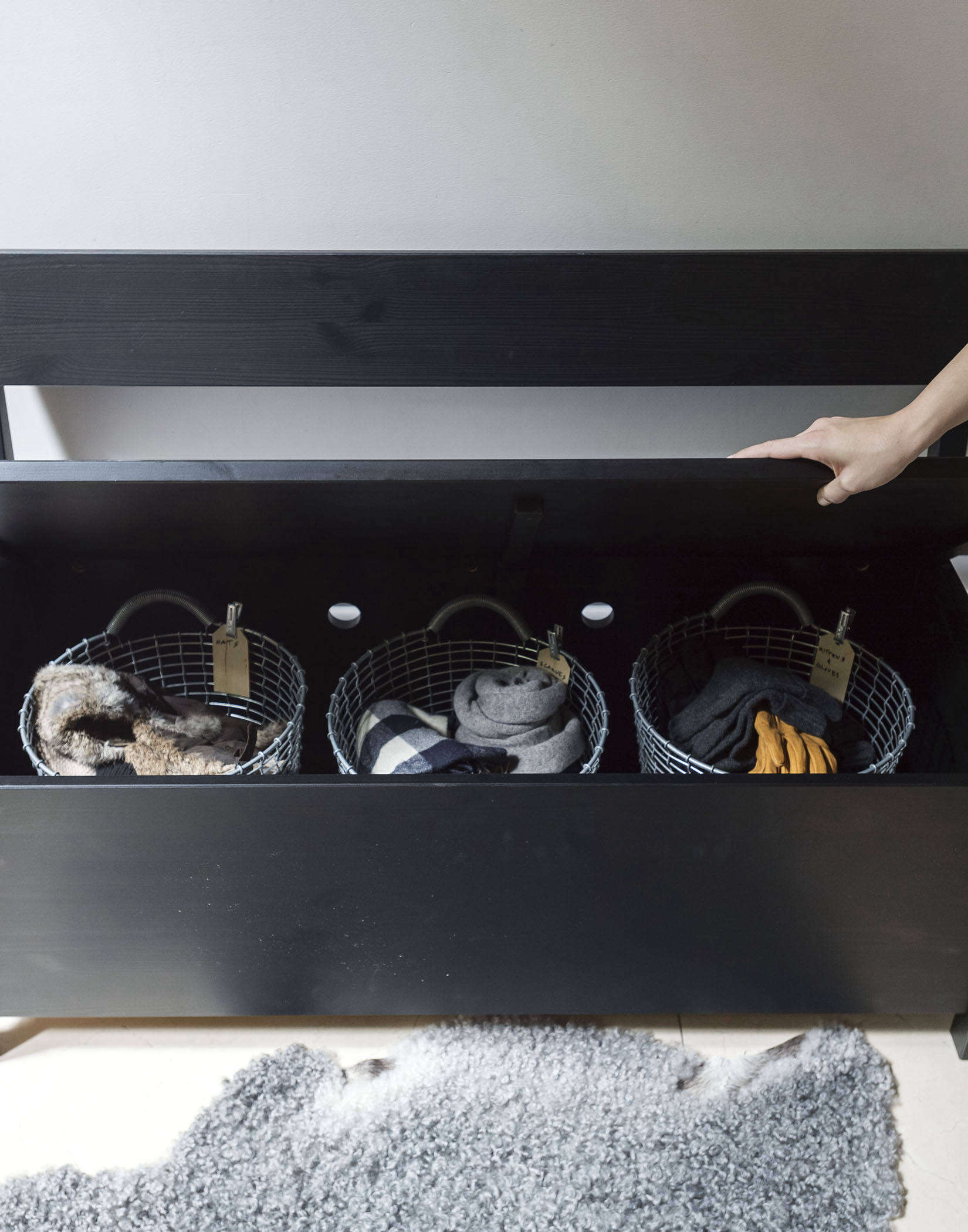When my husband and I moved out of our 450-square-foot Brooklyn apartment, I learned a couple of things in the course of packing: The first was that we have a lot of things—a lot more than either of us realized. We hadn’t considered the under-bed loot and what was stashed amid the clever storage tricks we had thought up during our four years of small-space living. We thought we were minimalists! The second is the appalling amount of plastic and disposable materials that can creep into your life during a move. Trash comes in—by way of bubble wrap, paper, cardboard boxes, and tape—and trash goes out—mattresses, old paperwork, you name it. After the move, I started researching alternatives for next time. The good news? With a little planning and resourcefulness, there is a better, cleaner way to move—and it doesn’t involve carrying a cloth bindle. Here are 10 ways to lessen waste while packing and moving your stuff.
1. To start, have less stuff.

This is the obvious answer, but if you can achieve it well in advance of your move, all the better. Take inventory of what you already own with a pen and paper (mental inventory doesn’t cut it) to avoid bringing unnecessary or duplicate things into your new home. For example, during the recent move, I discovered I owned three different versions of Japanese-made thermoses. I gave away two and kept the one I use the most. Start paring back as early as possible. Then, consider joining the sharing economy over amassing more stuff: Use the library, rent movies from streaming services, borrow tools from local tool libraries, ask a neighbor for one-time needs.
2. Sell or donate as much as you can. Do it early on.
Consider a seasonal reassessment of your things—those extra Japanese thermoses, for example—and find ways to donate or sell the excess. For a comprehensive guide to getting rid of unwanted clothing, construction materials, craft supplies, furniture, housewares, and old tech goods by way of donation or sale, see the back section of our book, Remodelista: The Organized Home.
3. Check your local recycling services.

For electronics, visit the EPA’s recycling site to find local e-waste programs and stores that offer electronics recycling. For carpets, we suggest Carpet Cycle. And for everyday things unearthed in a move (excess papers and plastic goods), see our post on how to best recycle: Are You Recycling Wrong? Probably! 6 Common Recycling Mistakes to Avoid.
4. Order reusable moving boxes.
The low hanging fruit in reducing your environmental impact when relocating is to rent reusable moving boxes in lieu of buying new cardboard boxes. Companies in the US including ZippGo, Bungo Box, Bin It, Rent a Moving Box, Redi-Box, and even U-Haul offer reusable heavy-duty plastic moving crates of different sizes, wardrobe boxes included.
5. Collect used cardboard boxes from local shops.

If you have the time, check in with your local wine stores and corner shops and arrange to pick up their cardboard boxes after new deliveries. The bonuses are many: The boxes are free; their reinforced cardboard (for transporting heavy bottles) is good for packing your kitchen items; and you’ve added another step to their life cycle before they head to the recycling center.
6. Use eco-alternatives to conventional wrapping.
Before you go out and buy all the biodegradable packing goods on earth (because that, too, has an environmental impact), use what you already have on hand: think newspapers, T-shirts, tea towels, and bath towels. They all need to be packed so why not put them to use? I suggest using these items for the less breakable objects, such as silverware and stainless steel, that don’t need bubble wrap. If you must use bubble wrap for extreme breakables—such as glass, ceramic, and fine china—order a roll of Eco-Friendly Bubble Wrap made of recycled/post-consumer content. I also discovered products like EcoEnclose Corrugated Bubble and Greenwrap made from 100 percent recycled cardboard and paper craft tape (reinforced recommended) while shopping for supplies.
7. Pack smarter.

See everything in your house as a potential vessel. Pack wrapped kitchen goods inside a pot instead of just stuffing the interior with paper, and turn pot lids upside down to stack them. Use your travel bags—luggage and duffles—as moving boxes. Use packing as an opportunity to invent new hacks, and you’ll be surprised what you can come up with.
8. Use alternatives to plastic covers.

Instead of those giant heavy plastic sleeves for mattresses and upholstered furniture, utilize yardage of muslin fabric or a painter’s drop cloth—items that after the move, you’ll use in other ways: a painter’s drop cloth as a picnic blanket, old muslin as an outdoor tablecloth or cut into rags (see below). Stow clothing and shoes in cotton or canvas zippered bags; we like the ones from The Butler’s Closet and standard shoe bags from Amazon.
9. Cut old clothes and linens into rags.
While I typically avoid using paper towels around the house, I found myself buying roll after roll during the days leading up to our move date. There was a lot of dust and grime to be cleaned along the way. Instead of paper towels, put tattered old clothing to use and cut them into square rags so that once you’ve packed your kitchen towels away, you still have something to use and reuse.
10. Use a camp-style mess kit for eating takeout.

During a move, you will, invariably, have to order takeout/delivery food. Part of the process of moving, if you ask me, has always been eating out of Chinese takeout containers on top of boxes used as tables and chairs. It’s a tradition! Once your dishes and flatware are packed, it could be one to three weeks before you see them again, and in that time, you can really go through a lot of plastic forks and paper plates if you’re not careful. Tell the delivery places to hold the plastic and keep a kit of small share plates, travel water bottles, and silverware—a fork-spoon-knife set for each person in your family. You can cut down on a lot of unnecessary waste that way, and pack the dish sets into a bag on moving day.
For more ideas to whip your house into shape, see our posts:
- 10 Tips for Maximizing Storage Space in a Tiny Kitchen
- Expert Advice: Sebastian Conran’s 11 Tips for Designing a Small Kitchen
- Expert Advice: Strategies for Successful Decluttering, from the Authors of ‘New Minimalism’
N.B.: This post has been updated with new links; it was first published June 2018.






Have a Question or Comment About This Post?